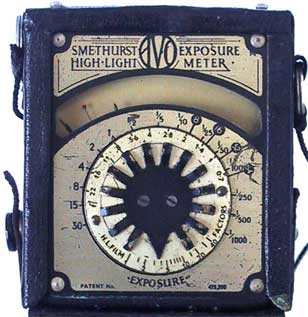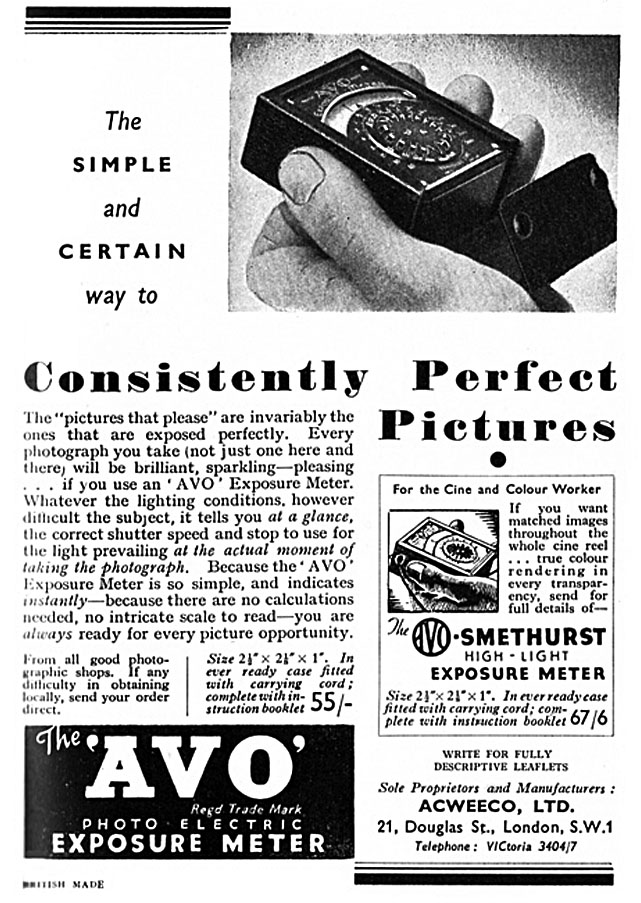
|
  Maker: AVO (ACWEECO) Model: Smethurst High-Light Designer: Philip Smethurst UK Patent: 458546 Circa: 1937 Cell type: Selenium Measure type: 2D incident |
|
If you study electricity or electronics, among the first things you learn are three fundamental measurements: voltage, amperage and resistance (which is measured in Ohms). Early on, there was a separate meter to measure each: a voltmeter, an ammeter and an ohmmeter.
Philip Smethurst was an English photographer/scientist who started Smethurst High-Light, Ltd. and likely designed this unit (he has a couple of early patents for exposure meters, including an incident) and got ACWEECO to manufacture it. No idea how well any of this worked out, as this is the only Smethurst-branded meter I've seen. There are a couple other AVO meters which bear a strong (but not exact) resemblance to it, but that's it. Very likely ACWEECO changed over to military manufacturing when World War II broke out in 1939, and by the time it was over, they were uninterested in getting back into the photographic market. According to Dunn & Wakefield in their Exposure Manual, this is the first incident light meter sold anywhere, and thus historically significant. This is an incident meter and the instruction manual goes to pains to explain how to measure the ambient light to get a useful reading. The dial has four positions (A, B, C, and D—hard to see on this photo) based on different conditions (bright sun, open shade, etc). But the most unusual feature is the lack of exposure index. Instead they give a "factor" for various films, and you set the pointer on the center dial to the proper factor, then rotate the whole dial until the pointer matches the meter needle position, and then you read your shutter/aperture combinations. I was very fortunate: mine still works, and it came with the box, the case, the manual and a packet of stickers you're supposed to use when you send your film to the lab, telling them not to use "compensating" development. If you're interested in some subsequent AVO meters, check out this page from a very good Weston meter site. |
|
©opyright by James Ollinger. All Rights Reserved.
Company names and models are registered trademarks of their respective owners
and are not affiliated with this website in any way.

